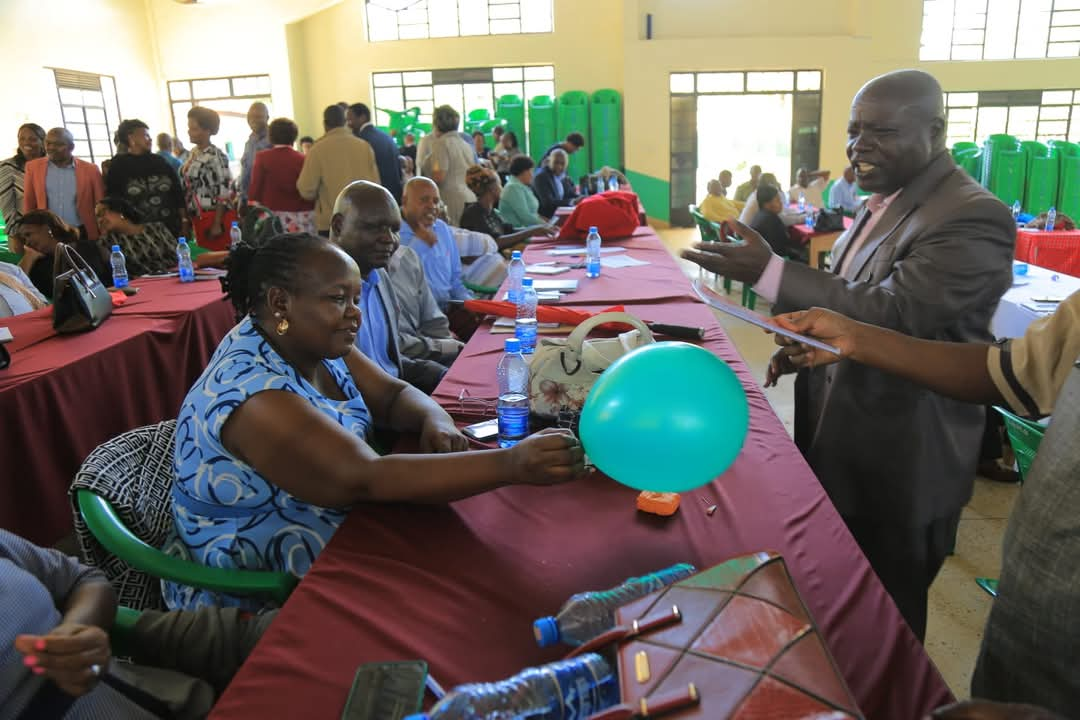
School Principals undergoing training on transition of Junior Schools learners to Senior Schools
Principals Prepare for Transition of Learners to Senior School
A significant number of school principals nationwide are currently participating in training programs aimed at facilitating the transition of Junior Secondary School (JSS) students to Senior Secondary School, which is set to commence next year.
This extensive training initiative, led by the Ministry of Education and supported by the Centre for Mathematics, Science and Technology Education in Africa (CEMASTEA), is designed to engage over 7,000 principals. The primary objective is to equip these educational leaders with the requisite knowledge and skills to effectively implement the new Competency-Based Education (CBE) framework and to guide Grade 9 students as they progress into three specialized pathways in senior secondary education: Science, Technology, Engineering, and Mathematics (STEM), Arts and Sports, and Social Sciences.
Nancy Macharia, Chief Executive Officer of the Teachers Service Commission, emphasized the pivotal role of principals in ensuring the success of this transition. She stated, “You are frontline commanders, and your leadership as principals is instrumental. It is essential to facilitate a seamless transition and the effective implementation of the CBE in senior schools.” Macharia further noted that this transition represents a significant milestone, particularly in the introduction of career pathways that align with students’ aspirations and abilities.
“As we prepare for the inaugural cohort of Grade 10 students in 2016, it is crucial to ensure that we have the necessary facilities, adequately trained educators, and a supportive learning environment,” she added. The new curriculum will introduce career specialization from Grades 10 to 12, allowing students to select from the pathways of STEM, Arts and Sports, or Social Sciences. Each student will engage in seven subjects: four core subjects—English, Kiswahili, Community Service Learning, and Physical Education—and three electives corresponding to their chosen pathway.
Macharia articulated that “the modern economy necessitates a workforce that is not only knowledgeable but also adaptable and innovative. The transition to competency-based teaching is intended to prepare learners for diverse post-secondary pathways.” The Ministry of Education has established training centers in all 47 counties and remains committed to training department heads, teachers, and support staff, thereby underscoring the national priority of this transition.
CEMASTEA Director Makoba Kizito elaborated that the training program was developed in response to a survey of 1,300 principals, which identified a need for enhanced understanding of the CBE pathways, admission criteria, and infrastructure requirements. “The STEM pathway will be mandatory in all schools, with each institution expected to offer at least one additional pathway based on its capacity,” Kizito remarked, highlighting the critical role of parents in this transition.
“Parents are integral to the transition process. They will assist students in making informed decisions regarding their educational pathways. There is a pressing need for mentorship and effective communication,” he emphasized. Willy Kuria, Chairman of the Kenya Secondary School Heads Association (KESSHA), indicated that schools are preparing to welcome students in January.
“This training has answered many of the questions we had. Now, we feel ready to welcome our first cohort of Grade 10 learners,” said Kuria.
Kuria acknowledged the initial concerns about managing the shift from the 8-4-4 system, particularly around assessments and new teaching methods.
“The CBC is the best system because it emphasizes formative assessment over high-stakes exams. It will reduce exam irregularities and help students develop practical skills,” he added.
Benson Manoo, Principal of Machakos School praised the curriculum for encouraging creativity and innovation.
“We’ve learned to make use of local resources instead of relying on expensive materials. This system trains learners to be self-reliant,” he said.
Anthony Thuo, principal of Ofafa Jericho high school pointed out the broader economic benefits of the CBC.
“Our modern economy demands more than just knowledge. It requires innovation and adaptability. The CBC is designed to equip learners for multiple post-secondary pathways,” he said.
In Busia County, Director of Education James Ekaliyo noted that the government had already constructed 418 new classrooms and ensured timely textbook delivery during the Grade 9 rollout.
“We’ve also trained principals in private schools to ensure uniform understanding and implementation of the guidelines,” Ekaliyo added.
Education Cabinet Secretary Julius Ogamba, while addressing Parliament last week, emphasized that the reforms would touch more than just principals.
“We are targeting 212,000 teachers for training before next year to ensure the system is fully prepared,” he said, adding that placement will consider students’ choices, merit, school capacity, and results from psychometric tests.
“This process will continue throughout the year. We are preparing not just our schools but the leaders in the institutions. By next year, schools will be ready to welcome the transition seamlessly,” he stated.

